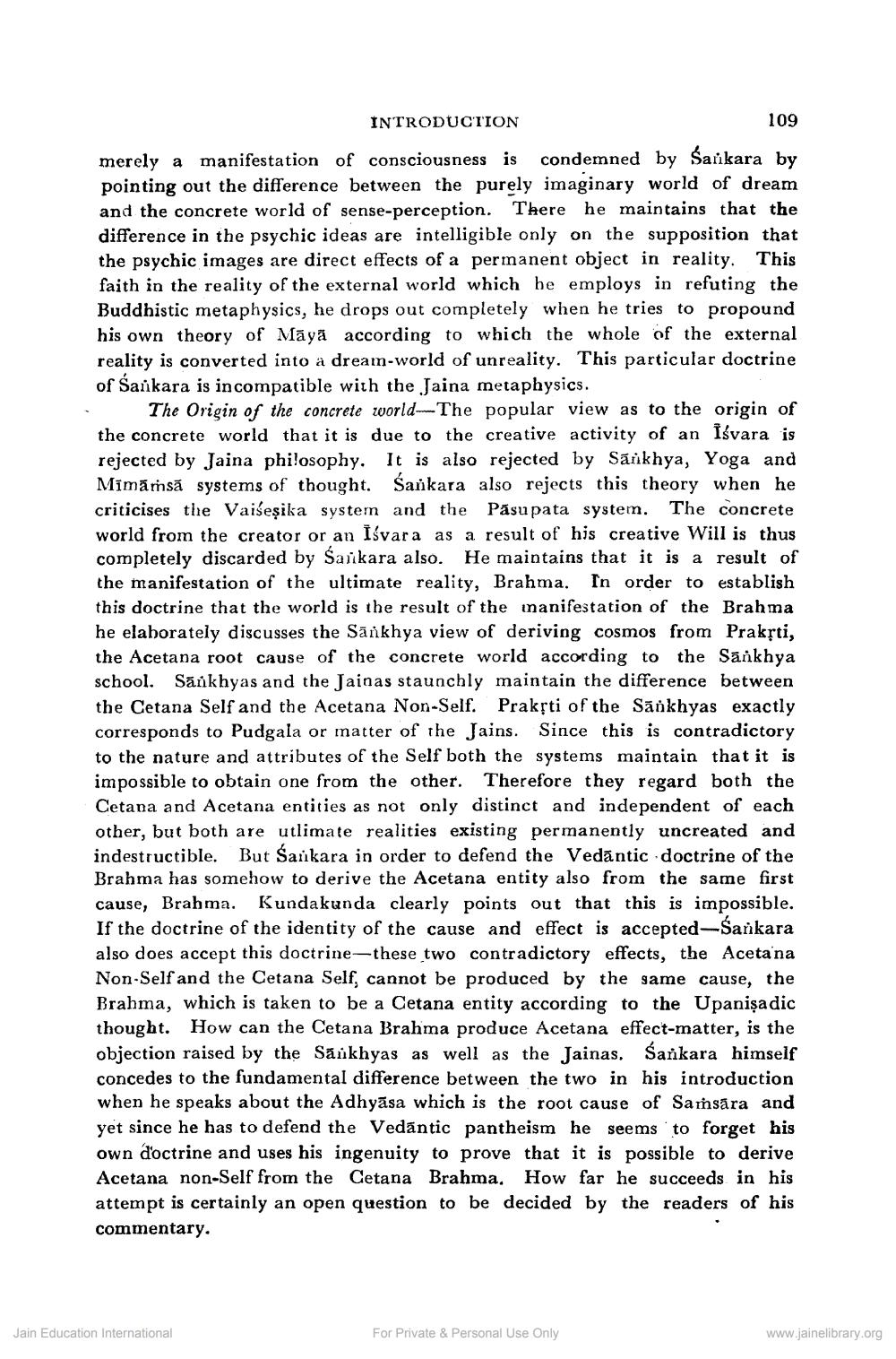________________
109
merely a manifestation of consciousness is condemned by Sankara by pointing out the difference between the purely imaginary world of dream and the concrete world of sense-perception. There he maintains that the difference in the psychic ideas are intelligible only on the supposition that the psychic images are direct effects of a permanent object in reality. This faith in the reality of the external world which he employs in refuting the Buddhistic metaphysics, he drops out completely when he tries to propound his own theory of Maya according to which the whole of the external reality is converted into a dream-world of unreality. This particular doctrine of Sankara is incompatible with the Jaina metaphysics.
The Origin of the concrete world-The popular view as to the origin of the concrete world that it is due to the creative activity of an Iśvara is rejected by Jaina philosophy. It is also rejected by Sankhya, Yoga and Mīmāmsă systems of thought. Sankara also rejects this theory when he criticises the Vaiseșika system and the Pasupata system. The concrete world from the creator or an Iśvara as a result of his creative Will is thus completely discarded by Sankara also. He maintains that it is a result of the manifestation of the ultimate reality, Brahma. In order to establish this doctrine that the world is the result of the manifestation of the Brahma he elaborately discusses the Sankhya view of deriving cosmos from Prakṛti, the Acetana root cause of the concrete world according to the Sankhya school. Sankhyas and the Jainas staunchly maintain the difference between the Cetana Self and the Acetana Non-Self. Prakṛti of the Sankhyas exactly corresponds to Pudgala or matter of the Jains. Since this is contradictory to the nature and attributes of the Self both the systems maintain that it is impossible to obtain one from the other. Therefore they regard both the Cetana and Acetana entities as not only distinct and independent of each other, but both are utlimate realities existing permanently uncreated and indestructible. But Śankara in order to defend the Vedantic doctrine of the Brahma has somehow to derive the Acetana entity also from the same first cause, Brahma. Kundakunda clearly points out that this is impossible. If the doctrine of the identity of the cause and effect is accepted-Śańkara also does accept this doctrine-these two contradictory effects, the Aceta na Non-Self and the Cetana Self, cannot be produced by the same cause, the Brahma, which is taken to be a Cetana entity according to the Upanisadic thought. How can the Cetana Brahma produce Acetana effect-matter, is the objection raised by the Sankhyas as well as the Jainas. Sankara himself concedes to the fundamental difference between the two in his introduction when he speaks about the Adhyasa which is the root cause of Samsara and yet since he has to defend the Vedantic pantheism he seems to forget his own doctrine and uses his ingenuity to prove that it is possible to derive Acetana non-Self from the Cetana Brahma. How far he succeeds in his attempt is certainly an open question to be decided by the readers of his commentary.
Jain Education International
INTRODUCTION
For Private & Personal Use Only
www.jainelibrary.org




